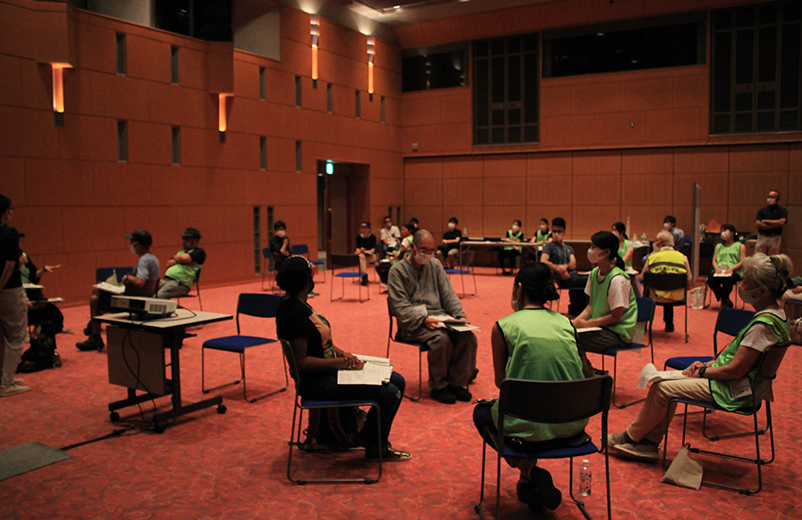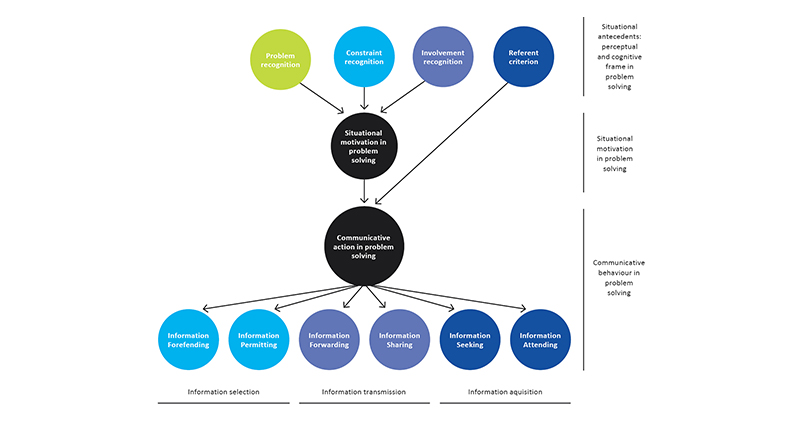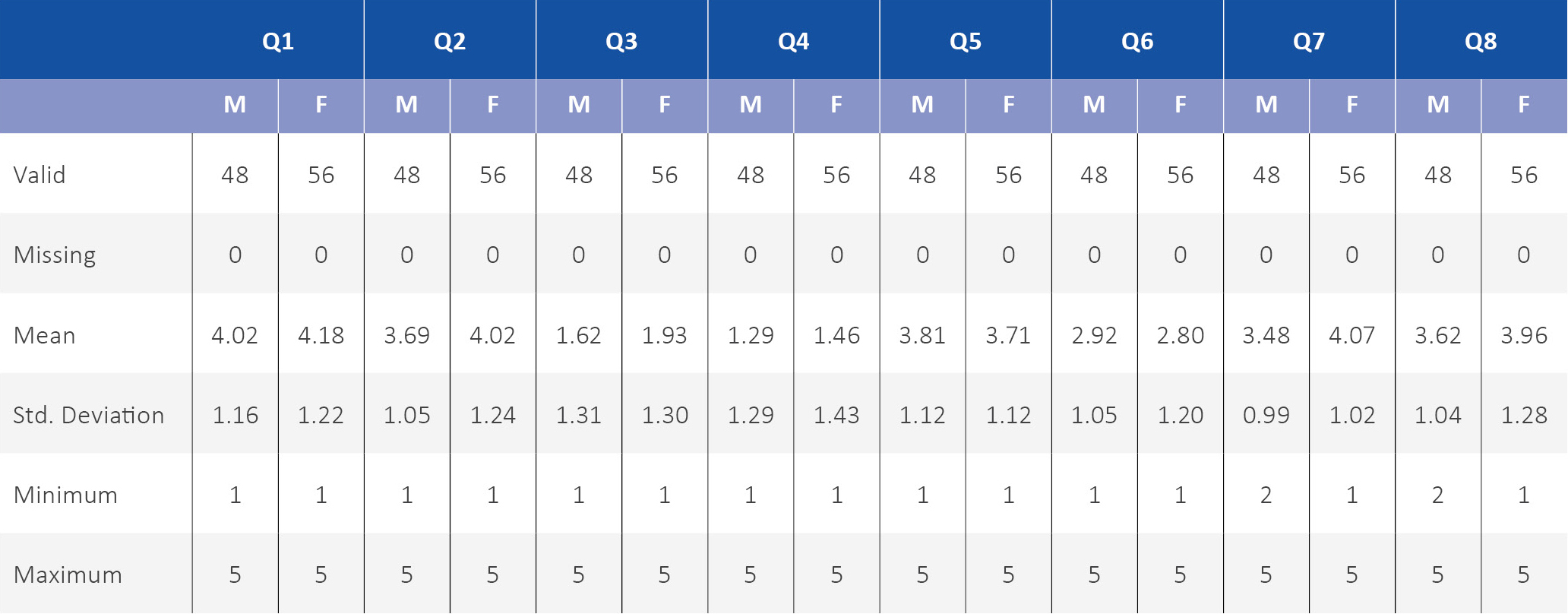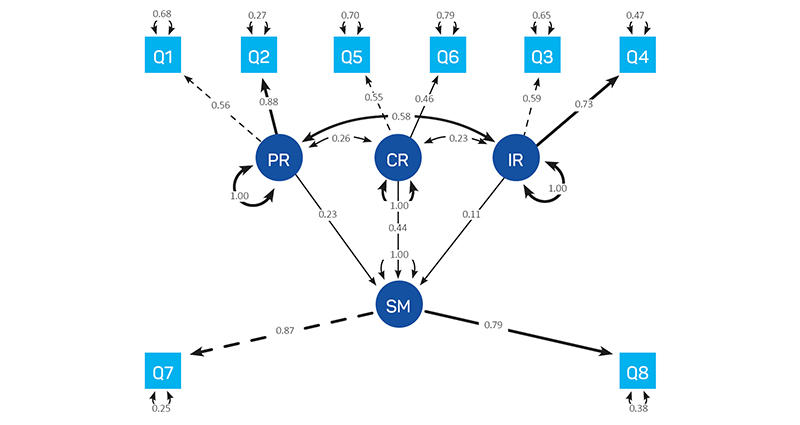There is a misconception that Japan is a monocultural and homogeneous country. The variety of social classes and the increasing rate of foreigners, repatriates and students living in Japan defies this assumption. However, disaster preparedness and communication strategies tend to simplify the problem of multicultural communication in disaster as a purely linguistic issue. This research examines the assumption by Japanese policymakers and media that all residents in the Japanese archipelago are equally equipped with the cultural background and basic knowledge of the ‘average Japanese’. The research questions were: ‘how do foreign residents living in Japan perceive disaster preparedness and communication strategies?’ and ‘what are the factors affecting their perceptions?’. Research findings suggest that the challenges faced by foreign residents go well beyond linguistic barriers and include cultural and social aspects that occur in their daily lives. This paper contributes to a better understanding of the perceived risks for foreign residents in Japan and suggests improvements in preparedness and communication strategies to minimise the vulnerabilities of communities in Japan.
Introduction
Risk perception in preparedness
The fact that foreigners are disproportionately affected in disasters, in combination with an expected increase in Japan’s foreign resident population, requires an urgent assessment of their vulnerability (Nagy 2009). To minimise vulnerabilities for foreign residents, conventional disaster preparedness strategies rely on the institutional environment, infrastructure safety and available information. However, little attention has been given to the role that perception of risk plays in minimising vulnerabilities, despite the literature suggesting an important link between risk perception and disaster preparedness (Oliver-Smith 1999, Boret 2020). This research aims to fill this gap by investigating the disaster risk perceptions of foreign residents.
The relevance of this study is that risk awareness during a crisis can increase resilience and reduces reliance on external help. A case study is used to illustrate this. During the flooding in Kyushu, Japan in 2020, the deployment of relief personnel, normally in charge of coordinating and providing relief operations was reduced, delayed or did not occur at all due to the COVID-19 pandemic. As a result, individuals and households had to rely on their own knowledge and local resources (Kamino 2020).
Factors affecting risk perception
Research on communication during disaster events for foreign residents often focuses on linguistic barriers and pays less attention to other social and cultural aspects such as disaster risk perceptions of foreign populations (Uekusa 2019). This study investigated the social and cultural factors affecting disaster risk perceptions of foreign nationals and how these factors could be included in future communication strategies.
To understand individual perceptions of disaster risks, different cultural backgrounds and other social factors must be acknowledged. Social factors, such as age, gender and social class, are important aspects of social vulnerability (Jayarathne & Babu 2017; Hamidazada, Cruz & Yokomatsu 2019). However, these aspects have only been considered as vulnerabilities after a disaster, not as factors that can influence the perception of risks before a disaster. An example is the post-disaster study by Davidson and co-authors (2013) that investigated the effects of social and economic factors on disaster vulnerabilities among Latino and African communities in the US. The study showed that the socio-economic conditions of immigrant communities made them more vulnerable and more exposed to negative mental health outcomes compared to local residents.
To acknowledge the importance of different cultural backgrounds, this study introduces the element of individualistic-communitarian societies to investigate if the society structure of the country of origin affects disaster risk perceptions of foreign nationals (Trompenaars & Hampden-Turner 1998, Zialcita 1999).
The paper addresses 2 research questions:
- RQ1: What are the disaster risk perceptions of foreign residents in Japan?
- RQ2: What are the factors affecting these perceptions?
The study found that constraint recognition and awareness influence risk perception and that gender, as well as the society structure of the home country, strongly influence disaster risk and communication perceptions.
Research design
Data were collected through a survey based on the Situational Theory of Problem Solving (STOPS) model (Kim & Grunig 2011). The STOPS model was developed in public communication sciences and is centred on individual perceptions to predict motivation to act and behaviour change (Kim & Krishna 2014, Chen et al. 2017). The model has been used to assess gender-based disaster risk perceptions of Japanese citizens (Petraroli 2020) and is applied here to analyse the perception of disaster risk of foreign residents.
Location and participants
This research was conducted between September 2020 and February 2021 in the cities of Osaka and Kyoto in Japan. Kyoto and Osaka were chosen for the high numbers and diversity of the foreign communities. In 2020, 2.8% of the total population of Osaka Prefecture was foreign residents (253,303), making it the third-highest prefecture for foreign populations in Japan. The foreign community is mostly from countries in South East Asia, especially South and North Korea (jointly counting 38% of the foreign community), China (26%) and Vietnam (14%). The foreign population in Kyoto Prefecture in 2020 was 2.4% of the total population (62,510), with higher components of Europeans (4.4%) and Americans (3.2%) (Immigration Services Agency of Japan 2020). Osaka and Kyoto offer varied support systems for non-Japanese residents. For example, the International House Foundations1 offer services including disaster drills and preparedness activities specifically tailored for foreign nationals.
Surveys were distributed online to foreign students at Kyoto University (selected through quota sampling) and members of a local not-for-profit organisation supporting foreign resident women. The survey was provided in English, Chinese and Japanese to foreign nationals living in Japan for more than one year. The majority of respondents were university students (52%), followed by employed (25%) and self-employed (13%) workers. They also differed for gender and age: 53% of the respondents were women (n=56) and 47% were men (n=48), aged 14 to 59.
This research was funded and approved by the Japanese Ministry of Education, Culture, Sports, Science and Technology.

Disaster prevention event for foreign residents conducted at Kokoka Kyoto International Community House, Kyoto City in 2021. Image: Irene Petraroli
Situational Theory of Problem Solving model
The methodological framework derives from the public communication STOPS model (Figure 1). The model, developed by Kim and Grunig (2011), was used to assess ‘the extent to which a person is willing to learn and think more about a given problem’, classified as ‘situational motivation’ (Kim et al. 2012, p.151). This model was chosen because it allows investigation of how foreign residents perceive disaster risk and preparedness (Kim & Krishna 2014, Chen et al. 2017). The model suggests that situational motivation can be predicted by 3 perceptive factors (Kim & Grunig 2011):
- Problem recognition: One’s perception that something is missing and that there is no immediately applicable solution to it.
- Constraint recognition: One’s perception that there are obstacles in a situation that limit their ability to do anything about the situation.
- Involvement recognition: One’s perception of the extent to which people connect themselves with a situation.
Each factor corresponded to 2 statements in the survey and was measured on a 5-point Likert scale (1 = strongly disagree to 5 = strongly agree).

Figure 1: STOPS model. Source: Kim and Grunig (2011)
Analysis
The data were analysed using descriptive statistical analysis. Confirmatory factor analysis was used to test the adequacy of the model. To test the effects of problem recognition, involvement recognition and constraint recognition on situational motivation, multiple regression and structural equation modelling were conducted. A series of univariate analyses of variance was used to test the effects of the external factors of gender, age, language knowledge and the society system of the country of origin on situational motivation, problem recognition, involvement recognition and constraint recognition. The identification of the ‘communitarian’ or ‘individualistic’ nature of the country of origin, was based on the Trompenaars cultural dimensions (Trompenaars & Hampden-Turner 1998), the Hofstede Insights software for cultural comparison, as well as media accounts, and literature from social and communication science (Hofstede Insights no date, Zialcita 1999, Myles 2018, Dansong 2020). The main characteristics of the individualistic and communitarian societies are shown in Table 1.
Table 1: Individualistic and communitarian society characters.
| INDIVIDUALISTIC SOCIETY | COMMUNITARIAN SOCIETY | |
| Focus | Individual achievement over community. | Community’s goals prioritised over individual achievements. |
| Values | Focuses on individual autonomy and individual decision-making. |
Focuses on community values and more people involved in decision-making. |
| State role | Lower state intervention. | Higher state intervention. |
Results and discussion
The data showed that situational motivation was determined by the constraint recognition and problem identification of the respondents. Situational motivation was also influenced by gender and society model of the country of origin.
General perception of risk
RQ1: What are the disaster risk perceptions of foreign residents in Japan?
Table 2 shows a general high interest in the topic of individual disaster risk perception as illustrated by the high values of situational motivation (Q7-Q8). Respondents were aware of the topic of individual vulnerabilities for foreigner residents (Q1-Q2) and identified with the issue of multiple disaster risks both personally (Q3) and for those around them (Q4). Although respondents considered themselves capable of minimising risk through individual actions (Q5), they considered the lack of communication with authorities as an obstacle to their ability to improve their risk preparedness (Q6).
A slight difference in the responses based on gender was recorded. Female respondents had a higher mean response in problem recognition (Q1-Q2), individual recognition (Q3-Q4) and situational motivation (Q7-Q8). Male respondents had slightly higher scores of constraint recognition (Q5-Q6). This could mean that men have lower perceptions of obstacles towards individual disaster preparedness.2
Confirmatory factor analysis was conducted to test the situational theory of problem-solving model. The Chi-square test shown in Table 3 established the adequacy of the model. The Comparative Fit Index (CFI=0.931) and Root Mean Square Error of Approximation (RMSEA=0.090) showed that the empirical model was adequate. Overall, the analysis showed that all the variables were statistically correlated with situational motivation and that problem recognition and involvement recognition were also statistically correlated (see Table 4).
Having established the relationship between variables and situational motivation, multiple regression analysis and standard equation modelling were used to determine how much variance of situational motivation can be explained by the model and which factors best predict this variance.
The adjusted R2 value shown in Table 5 estimates that 92% of the variance in situational motivation can be explained by the model and the joint capacity of variables predict the variation of situational motivation as significant (Table 6). Through a multiple regression and the standard equation modelling analysis, it was possible to establish that, holding other variables constant, constraint recognition (Q5-Q6) and problem recognition (Q1) were good predictors of situational motivation (Table 7). Problem recognition accounted for 23% and constraint recognition for 60% of the variance in situational motivation (Figure 2). This means that higher risk perception and lower perceived obstacles increased the desire to think and learn more about individual disaster risk. The analysis showed that, in opposition to the original STOPS model, involvement recognition (Q3-Q4) did not predict situational motivation (Figure 2).
Table 2: Descriptive statistics divided by Male (M) and Female (F) respondents.


Table 3: Chi-square test results.
| Model | X2 | df | p |
| Baseline model | 198.126 | 28 | |
| Factor model | 25.753 | 14 | 0.028 |
Table 4: Confirmatory factor analysis covariances.
| 95% Confidence Interval | |||||||||
| Estimate | Std. Error | z-value | p | Lower | Upper | Std. Est. (all) | |||
| Problem Recognition | ↔ | Individual Recognition*** | 0.62 | 0.14 | 4.503 | <.001 | 0.35 | 0.89 | 0.62 |
| Problem Recognition | ↔ | Constraint Recognition | 0.27 | 0.18 | 1.526 | 0.127 | -0.08 | 0.61 | 0.27 |
| Problem Recognition | ↔ | Situational Motivation*** | 0.45 | 0.11 | 3.985 | <.001 | 0.23 | 0.67 | 0.45 |
| Individual Recognition | ↔ | Constraint Recognition | 0.18 | 0.20 | 0.892 | 0.372 | -0.22 | 0.58 | 0.18 |
| Individual Recognition | ↔ | Situational Motivation** | 0.43 | 0.13 | 3.209 | 0.001 | 0.17 | 0.69 | 0.43 |
| Constraint Recognition | ↔ | Situational Motivation*** | 0.69 | 0.16 | 4.279 | <.001 | 0.37 | 0.99 | 0.68 |
*p<.05, **p<.01, ***p<.001
Table 5: Model summary of multiple regression analysis.
| Model | R | R2 | Adjusted R2 | RMSE |
| H1 | 0.964 | 0.928 | 0.924 | 1.098 |
Table 6: Analysis of variance results.
| Model | Sum of Squares | dr | Mean Square | F | p | |
| H1 | Regression | 1533.881 | 6 | 255.647 | 212.102 | <.001*** |
| Residual | 118.119 | 98 | 1.205 | |||
| Total | 1652.000 | 104 | ||||
*p<.05, **p<.01, ***p<.001
Table 7: Coefficient results.
| 95% CI | ||||||||
| Model | Unstandardised | Standard Error | Standardised | t | p | Lower | Upper | |
| H1 | Q1* | 0.23 | 0.10 | 0.23 | 1.394 | 0.019 | 0.04 | 0.43 |
| Q2 | 0.19 | 0.11 | 0.19 | 1.805 | 0.074 | -0.02 | 0.41 | |
| Q3 | -0.03 | 0.09 | -0.04 | -0.371 | 0.712 | -0.21 | 0.14 | |
| Q4 | 0.20 | 0.09 | 0.24 | 2.303 | 0.023 | 0.03 | 0.37 | |
| Q5* | 0.26 | 0.10 | 0.25 | 2.761 | 0.007 | 0.07 | 0.45 | |
| Q6** | 0.29 | 0.09 | 0.28 | 3.120 | 0.002 | 0.11 | 0.48 | |
*p<.05, **p<.01, ***p<.001
Factors impacting risk perception: society model and gender
RQ2: What are the factors affecting these disaster risk perceptions?
Analysis of Variance (ANOVA) was conducted to test the statistical difference in the problem recognition, involvement recognition, constraint recognition and situational motivation of respondents based on their gender, confidence in understanding Japanese and society model of the country of origin. Based on the previous identification of constraint recognition and problem recognition as main predictors of situational motivation (see Table 8 and Figure 2), the ANOVA testing focused on factors that influence situational motivation, constraint recognition or problem recognition, not involvement recognition. The study found that gender and society model of the country of origin are significant determinants of the situational motivation of foreign residents. In particular, it found that foreign women and respondents from communitarian societies have higher situational motivation.
In the analysis on society model, 63% of the respondents came from communitarian societies (e.g. China) and 37% from individualistic societies (e.g. US). Tables 6 and 7 show that respondents from communitarian societies have statistically higher involvement recognition (Q3) and situational motivation (Q8), and statistically lower constrain recognition (Q6) than respondents from individualistic societies.
The second significant factor was gender. The descriptive statistics showed that women have a higher perception of the problem, constraint recognition, involvement recognition and interest (Table 2). This difference, however, is only statistically significant regarding the relation to situational motivation (Q7 and Q8) as shown in tables 8 and 9. The data do not show relevant statistical difference between male and female respondents with regards to problem recognition, constraint recognition and involvement recognition.
Since there was no difference in problem recognition, involvement recognition and constraint recognition, the situational theory of problem-solving model did not explain why women have a higher interest in learning more about disaster risk. This is because the model accounts for individual perception but not for socio-cultural roles and expectations. Harris, Jenkins & Glaser (2006) provide alternative explanations on why women have a higher perception of individual risk. One interpretation is that women devote more time to disaster preparedness activities than do men in Japan, since women are usually employed as part-time workers after they have a family (Charlebois 2014). Another understanding is that women have higher stakes in disaster risk perception because many take care of children and the elderly at home (Dominelli 2020, Petraroli 2020).
The ‘non-relevance’ of language
Language is often considered the most important factor of vulnerability for foreigners in Japan. However, this study showed that different language levels do not affect the perception of disaster risk. Although language self-assessment and individual recognition (Q4) were statistically correlated (tables 9 and 10), the standard equation modelling analysis suggested that involvement recognition does not affect situational motivation. This supports the argument that language understanding is not the only factor of vulnerability from the perspective of foreign residents in Japan.

Figure 2: Standard equation modelling analysis showing the relationship between situational motivation (SM), constraint recognition (CR), problem recognition (PR) and individual recognition (IR).
Table 8: Post-hoc comparisons of Society model and Gender and Language levels.
| 95% CI for Mean Difference | ||||||||
| Mean Difference | Lower | Upper | SE | t | ptukey | |||
| Q3 | Communitarian | Individualistic | 0.61 | 0.06 | 1.16 | 0.28 | 2.208 | 0.030* |
| Q6 | Communitarian | Individualistic | 0.64 | 0.17 | 1.11 | 0.24 | 2.718 | 0.008* |
| Q8 | Communitarian | Individualistic | -0.59 | -0.99 | -0.20 | 0.20 | -2.986 | <.004** |
| Q7 | Male | Female | -1.59 | -2.63 | -0.55 | 0.37 | -4.252 | <.001*** |
| Q8 | Male | Female | 0.61 | 0.06 | 1.16 | 0.28 | 2.208 | 0.030* |
| Q4 | Intermediate | Advanced Language | 0.64 | 0.17 | 1.11 | 0.24 | 2.718 | 0.008* |
*p<.05, **p<.01, ***p<.001
Table 9: ANOVA statistics of Society model and Gender and Language levels.
| Cases | Sum of Squares | df | Mean Squares | F | p | |
| Q3 | Society Model | 7.604 | 1 | 7.604 | 5.766 | 0.018* |
| Residual | 134.511 | 102 | 1.319 | |||
| Q6 | Society Model | 8.666 | 1 | 8.666 | 8.846 | 0.003** |
| Residual | 96.978 | 99 | 0.980 | |||
| Q8 | Society Model | 4.574 | 1 | 4.574 | 4.777 | 0.031* |
| Residual | 94.793 | 99 | 0.958 | |||
| Q7 | Gender | 12.266 | 1 | 12.266 | 14.112 | <.001*** |
| Residual | 85.174 | 98 | 0.869 | |||
| Q8 | Gender | 8.154 | 1 | 8.154 | 8.748 | 0.004** |
| Residual | 89.479 | 96 | 0.932 | |||
| Q4 | Language | 43.430 | 4 | 10.585 | 5.071 | <.001*** |
| Residual | 201.257 | 94 | 2.141 |
*p<.05, **p<.01, ***p<.001
Conclusion
Implications for communication strategies
This study investigated the perceptions of disaster risk among foreign residents in Japan to help improve preparedness. The 3 findings of this study inform recommendations for effective disaster communication and preparedness activities that target foreign residents in Japan.
The first finding is that problem recognition and constraint recognition are the main predictors of the motivation to learn about disaster risk. Problem recognition is traditionally considered the main factor to increase motivation (Bisri & Sakurai 2014), but this study argues that the perception of constraints in taking action is equally important to understand an individual’s motivation to learn about disaster risks. Currently, foreign residents in Japan have a high perception of constraints, illustrated by a lack of confidence in self-help capabilities and the idea that government officials do not consider their opinions. Such perceived constraints, reinforced by language barriers, information gaps and other difficulties of access, are highly detrimental to the residents’ motivations in taking risk-reduction actions. Therefore, to increase the resilience of foreign residents, preventative policies should promote higher awareness of disaster risk and easier access to the disaster resources and expertise available in Japan.
The second finding is that gender and society model of the country of origin affect people’s motivation in taking risk-reduction actions. This study found that foreign women respondents and respondents from communitarian societies were more motivated to take preventative actions. These considerations allow for better tailoring of preparedness actions targeting foreign populations. In addition, gender-sensitive disaster communication for Japanese women is often available only in Japanese or difficult-to-retrieve online in other languages (Petraroli 2020). A crucial goal of future communication would be to convert emergency and disaster information into languages suited to foreign women in the area. This requires a translation effort and to consider issues that might be irrelevant for Japanese citizens. For example, how to repatriate after a disaster and how to communicate with family back home. Also, new strategies are needed to include and motivate foreign men. Finally, there is a need for adaptive communication for people from individualistic societies who were shown to have lower motivation to minimise their vulnerabilities. Since foreign residents from individualistic countries tend to have fewer social networks (Santos et al. 2017), it is important to devise ways to include them, for example, by including methods that reach workplaces, training schools and universities.
Further research
This study encourages a shift in the preparedness narratives for emergency and disaster events concerning foreign residents. It is necessary to move communication research beyond linguistic issues and include comparable and robust data on gender and cultural differences to understand how foreign residents perceive disaster risks and understand and act on information about disasters. In particular, that the country of origin seems to effect motivation and perception indicates that there is a socio-cultural discriminant among foreign populations that needs to be investigated. It is possible, for example, that discrepancy between society models is due to exposure to disasters, since communitarian societies are mostly located in Asia-Pacific regions and are exposed to more natural hazards and disasters compared to people from countries in the West (Wood 2018). Also the gender component requires further study because the difference between foreign men and women is not originated in risk perception but is likely related to their different cultural and social roles. More research is needed to explore these socio-cultural discrepancies to promote truly inclusive and diverse preparedness strategies for disasters.


